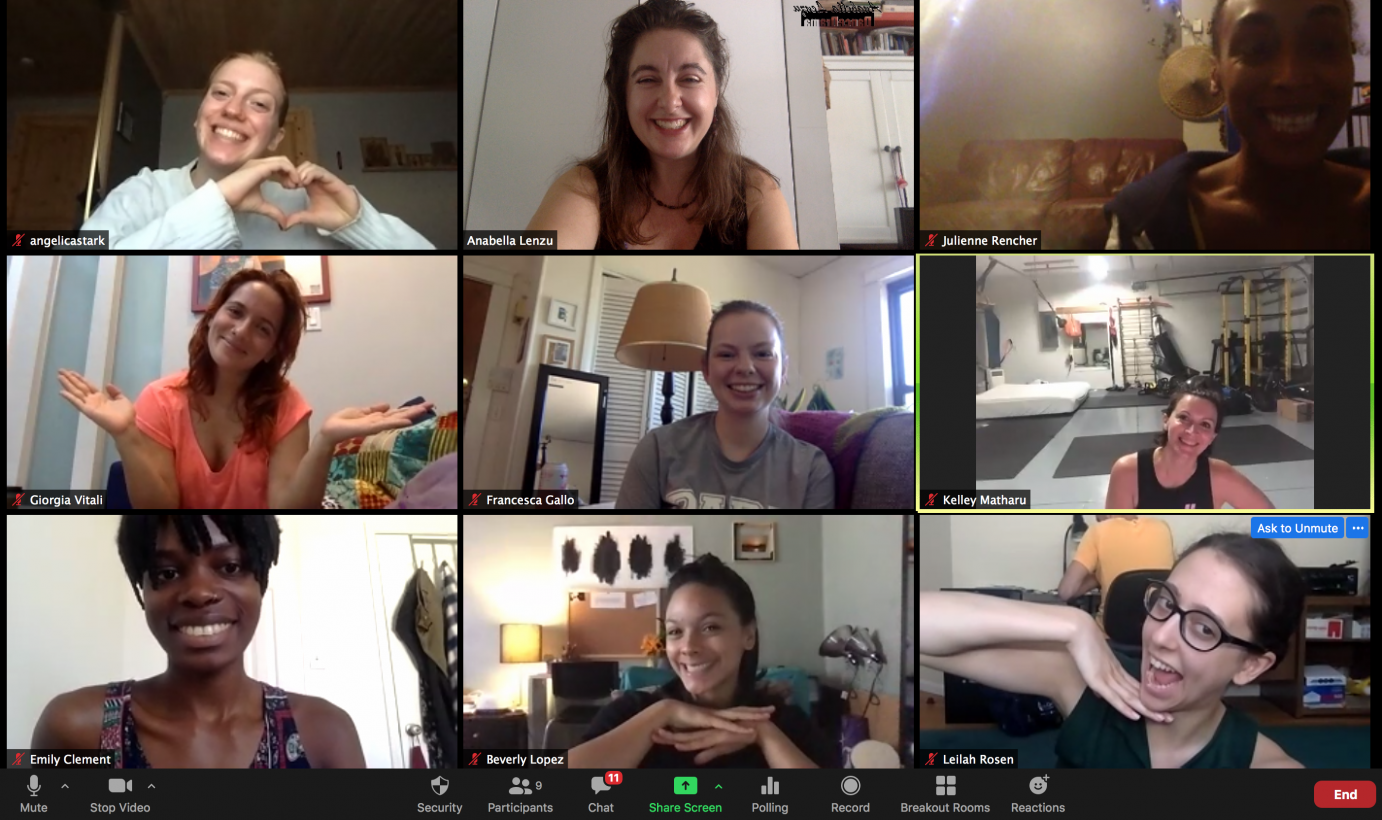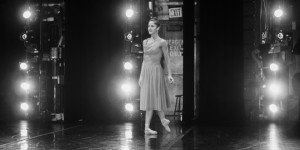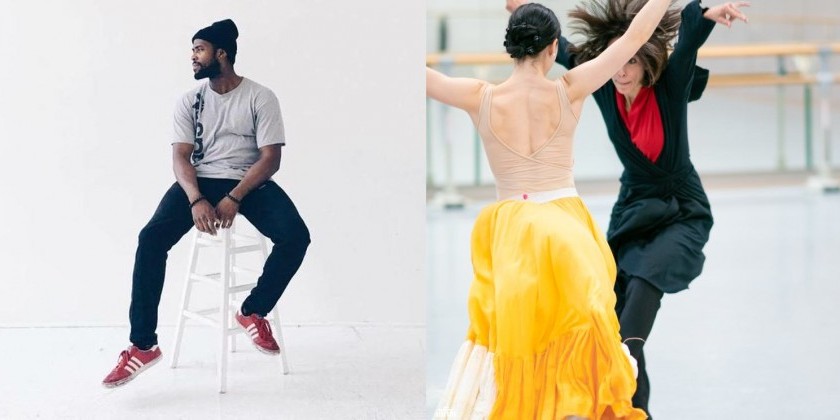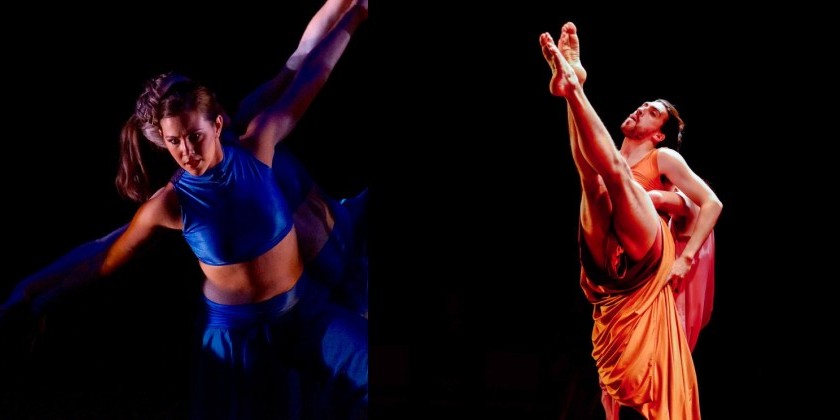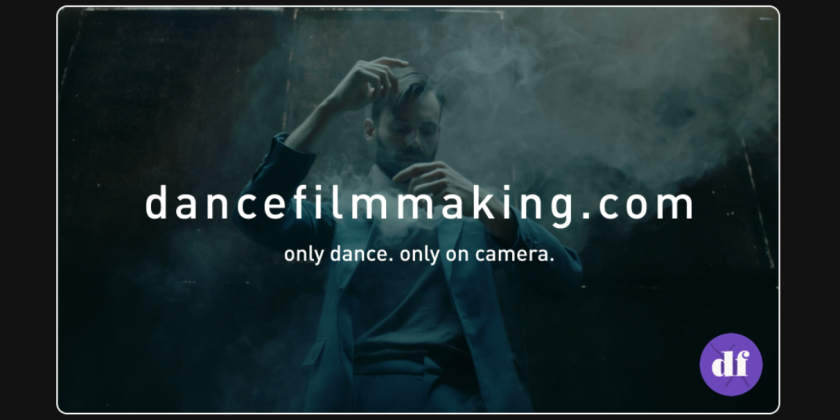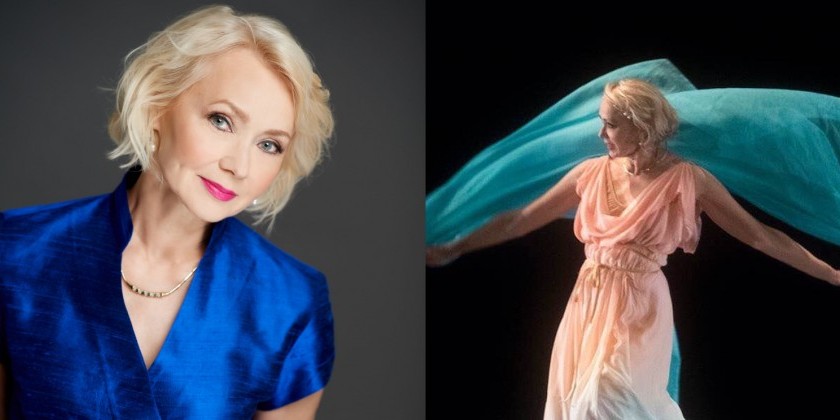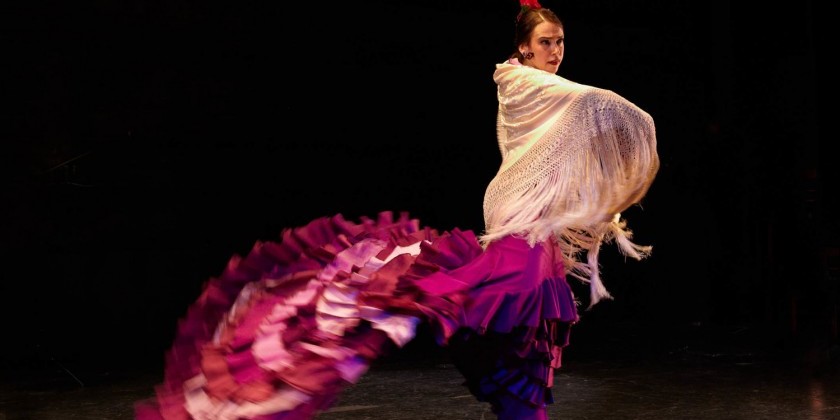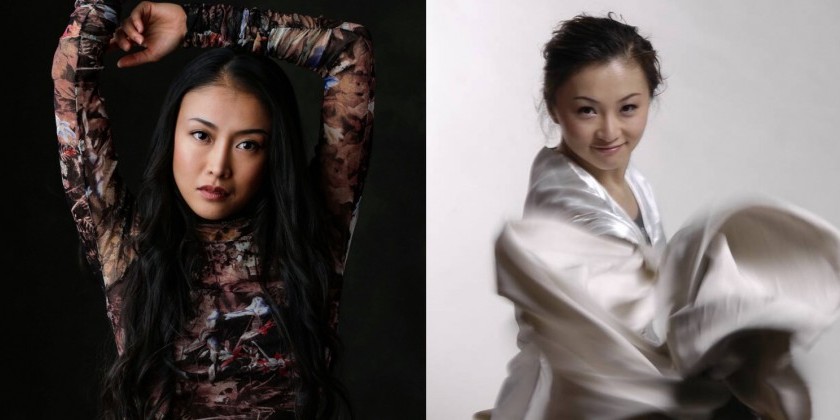6 Lessons Choreographer Anabella Lenzu Learned from Adapting 3D Compositions to A 2D Screen
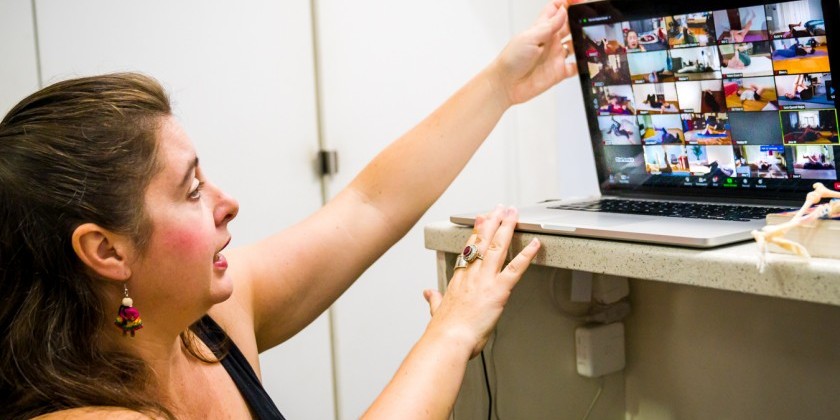
"I am passionate about composition, not just in dance, but also in the visual world," shares Argentinian dance artist Anabella Lenzu. The founder of Anabella Lenzu/Dance Drama acknowledges that her parents played an important part in shaping her view of the world: "Growing up in Argentina, my dad had a printing company and did graphic design. So in a way, he trained my eye’s composition and encouraged me to live creatively. His graphic designers taught me how to draw." Even prior to the Covid-19 pandemic, Lenzu has been creating dance films since 2018. In this feature, she shares some takeaways.
FUN FACT: The choreographer and dance educator studied sculpture for six years!
1 - Videography Is, on Some Level, an Extension of Photography
Anabella Lenzu started experimenting and creating dance films around 2018, mainly out of curiosity. "While collaborating with Italian videographer Angelo Vasta and photographer Todd Carroll, who is also my husband, I discovered how to adapt, extract and see my choreographic material transform from 3D to 2D. I see it as an extension of my visual hobby in photography."
2 - For Students: Accept Your Limitations, But Be Willing to Adapt & Grow
Akin to film photographers who had to switch to digital cameras, choreographers don't have much of a choice right now, claims Lenzu. "You can't survive without technology. I embrace the risk and the limitations because I love to create!" In the dance instructor's Dance Composition-Choreography Online Mentorships Workshop, she encourages her students to play without fear and judgment within the camera frame. "I invite them to explore questions like: What is choreography? How do we read dance now? What is performance for you now during the pandemic?"
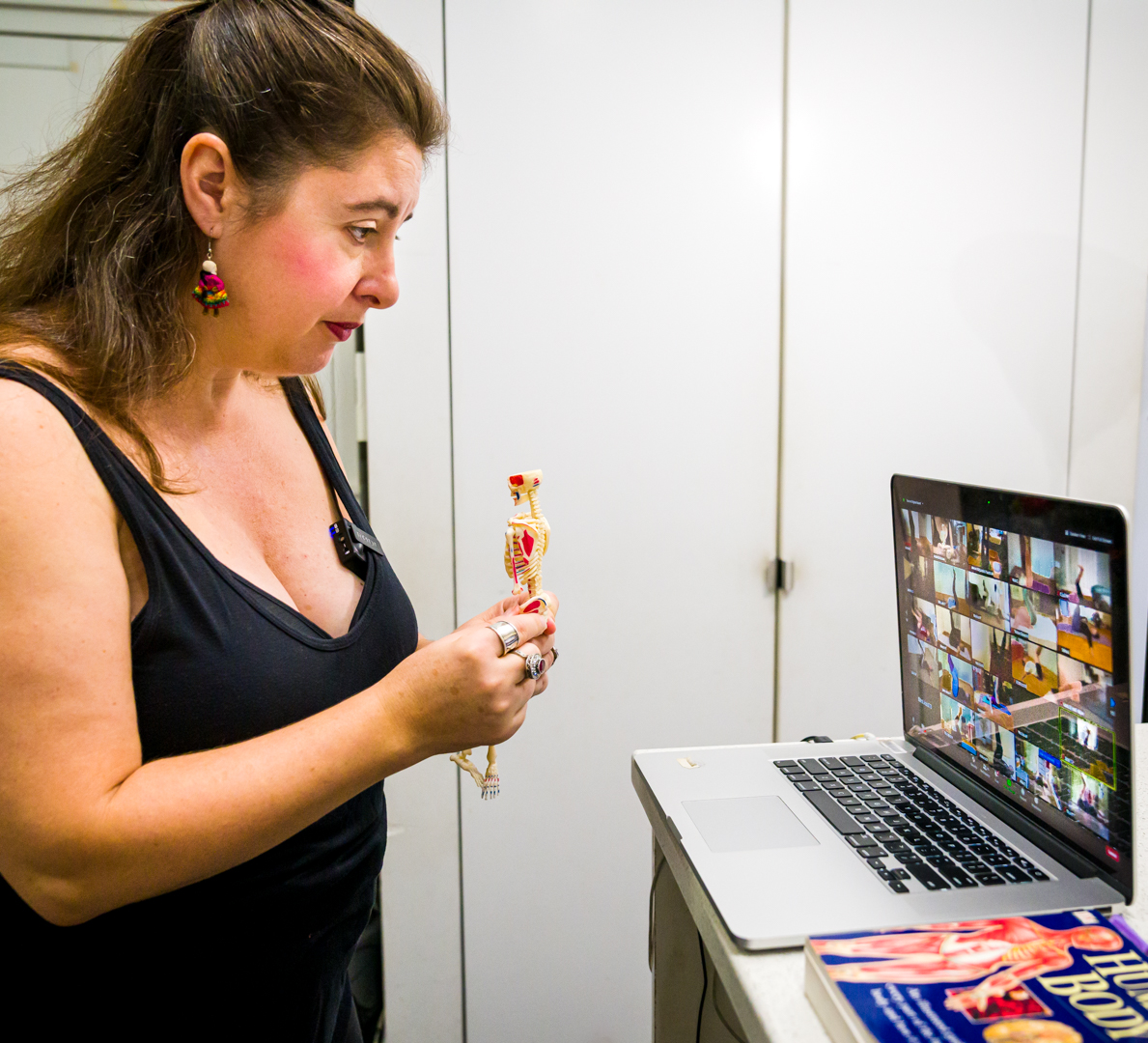
3 - For Teachers: Thinking out of the Box Improves the Quality of Online Lessons
"A good teacher is an excellent student" underscores Lenzu. "To teach is to be true to yourself, to acknowledge your darkest corners and your brightest moments." Instead of feeling intimidated by new methodologies, Lenzu chose to think of online lessons as refreshing, especially after teaching for 30 years.
Her life experiences, including motherhood, helped her adapt to the new normal: "During this pandemic, I'm reminded of when I was teaching while pregnant and could not fully demonstrate movements for the students. As a result, I became very specific in my language and vocabulary. Now when I teach online, I am surrounded by books (at least 10 per session). I always have them handy when I need to explain a specific issue."
Lenzu also enlists the help of a 'personal assistant' for her online lessons: a mini-skeleton nicknamed Chicho helps her illustrate biomechanics!
Although it is harder to read her students' expressions and correct their posture via video, Lenzu still pays close attention to her participants. "Not all students feel engaged while studying online," she admits. "Being so isolated has made some of them feel disconnected from their own bodies and lost. Altering the class rhythm, content and pace helps keep my students engaged."
She finds it also helps to assign homework: "I send them lots of links to articles and videos to peruse in their own time, so through critical thinking, I guide them into dialogue and discussions about empowerment, creating community, and camaraderie."
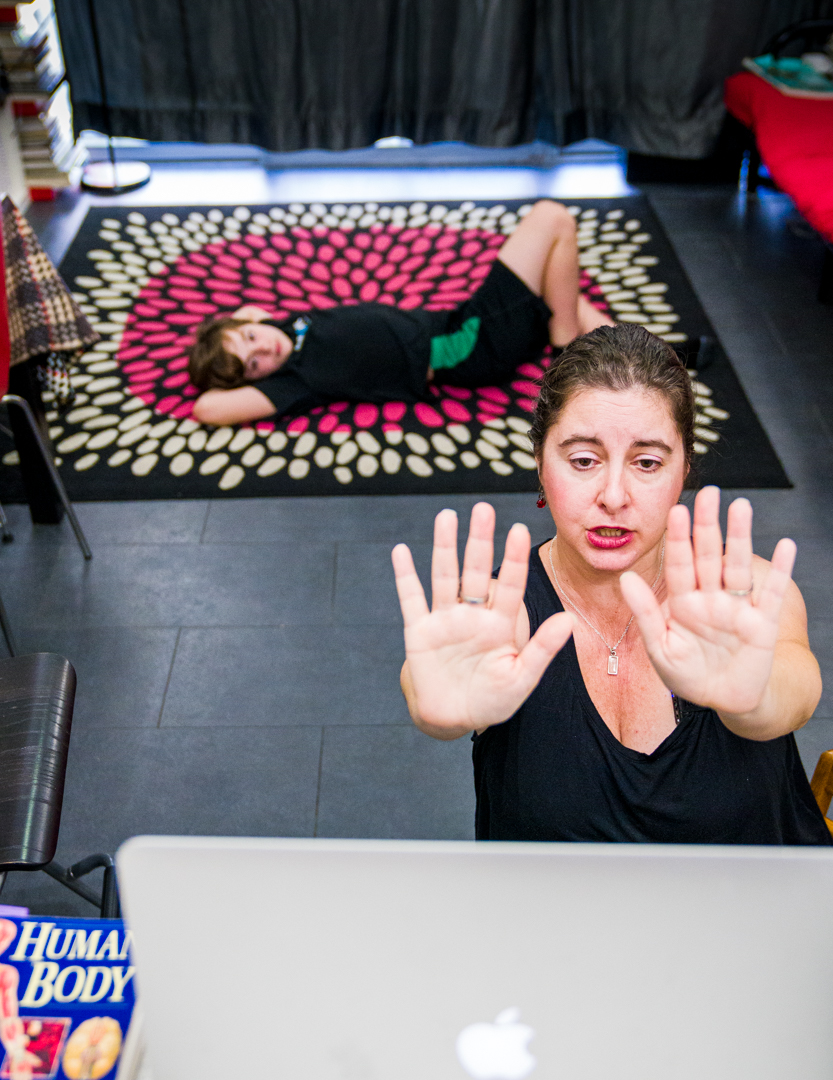
4 - Dance Films Will Never Supplant Live Performances, But They Can Have Greater Outreach
"Because I cannot show work in person now, I have to show it on the screen," shrugs Lenzu. "I am blessed to keep working, performing, and creating new dance films at home, and to get paid for my work, but video comes with pros and cons. I do miss listening to the audience while performing, and of course, I miss the applause! Nothing can supplant the live in-person experience, but I want to create an audacious and intimate dialogue about women's roles, struggles, beliefs, memories, and realities in addition to creating more social awareness within a global community, so video is helping me to achieve that."
5 - Video Content Allows Audiences to See Below the Surface
"To me, the video camera is like a magnifying glass that allows the audience to see below the surface," says Lenzu. "I can examine details and nuances that I can't in a live performance. Investigating how rhythms, patterns, textures, and points of view manifest on the screen is a wonder for me. My craft as a choreographer is not just about visuals, it is also about being aware of what experience I provide to the online audiences and what new ways or perceptions of dance theater I can explore.
6 - Shpwing Vulnerability on Screen
"My art is about celebration and criticism of socio-political and cultural barriers," explains Lenzu. "It is a ceremony of awareness. So I use the camera to show vulnerability and expression on a big scale. "I've found that during this pandemic, we are all sharing our vulnerability, our private spaces, and our art in a deeper way."
